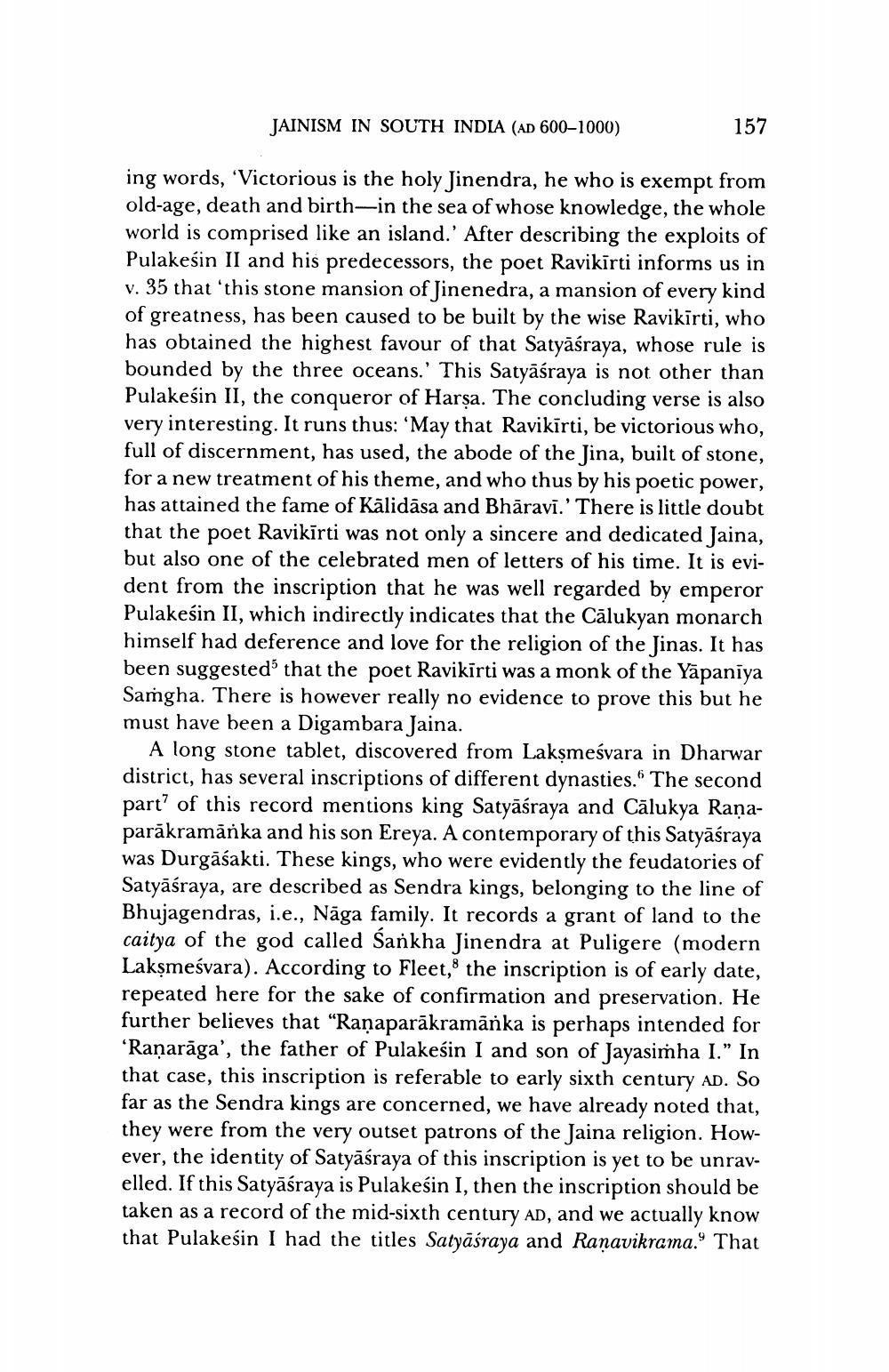________________
JAINISM IN SOUTH INDIA (AD 600-1000)
157
ing words, 'Victorious is the holy Jinendra, he who is exempt from old-age, death and birth-in the sea of whose knowledge, the whole world is comprised like an island.' After describing the exploits of Pulakesin II and his predecessors, the poet Ravikīrti informs us in v. 35 that 'this stone mansion of Jinenedra, a mansion of every kind of greatness, has been caused to be built by the wise Ravikīrti, who has obtained the highest favour of that Satyāśraya, whose rule is bounded by the three oceans.' This Satyāśraya is not other than Pulakesin II, the conqueror of Harsa. The concluding verse is also very interesting. It runs thus: 'May that Ravikirti, be victorious who, full of discernment, has used, the abode of the Jina, built of stone, for a new treatment of his theme, and who thus by his poetic power, has attained the fame of Kālidāsa and Bhāravī.' There is little doubt that the poet Ravikīrti was not only a sincere and dedicated Jaina, but also one of the celebrated men of letters of his time. It is evi dent from the inscription that he was well regarded by emperor Pulakesin II, which indirectly indicates that the Cālukyan monarch himself had deference and love for the religion of the Jinas. It has been suggested that the poet Ravikirti was a monk of the Yāpaniya Samgha. There is however really no evidence to prove this but he must have been a Digambara Jaina.
A long stone tablet, discovered from Lakşmeśvara in Dharwar district, has several inscriptions of different dynasties. The second part of this record mentions king Satyāśraya and Cālukya Raņaparakramānka and his son Ereya. A contemporary of this Satyāśraya was Durgăsakti. These kings, who were evidently the feudatories of Satyāśraya, are described as Sendra kings, belonging to the line of Bhujagendras, i.e., Nāga family. It records a grant of land to the caitya of the god called Sankha Jinendra at Puligere (modern Lakşmeśvara). According to Fleet, the inscription is of early date, repeated here for the sake of confirmation and preservation. He further believes that “Raņaparākramānka is perhaps intended for Ranarāga', the father of Pulakesin I and son of Jayasimha I." In that case, this inscription is referable to early sixth century AD. So far as the Sendra kings are concerned, we have already noted that, they were from the very outset patrons of the Jaina religion. However, the identity of Satyāśraya of this inscription is yet to be unravelled. If this Satyāśraya is Pulakesin I, then the inscription should be taken as a record of the mid-sixth century AD, and we actually know that Pulakesin I had the titles Satyāśraya and Ranavikrama. That




